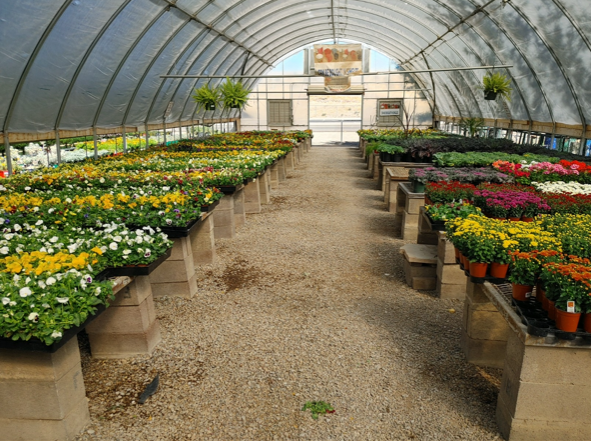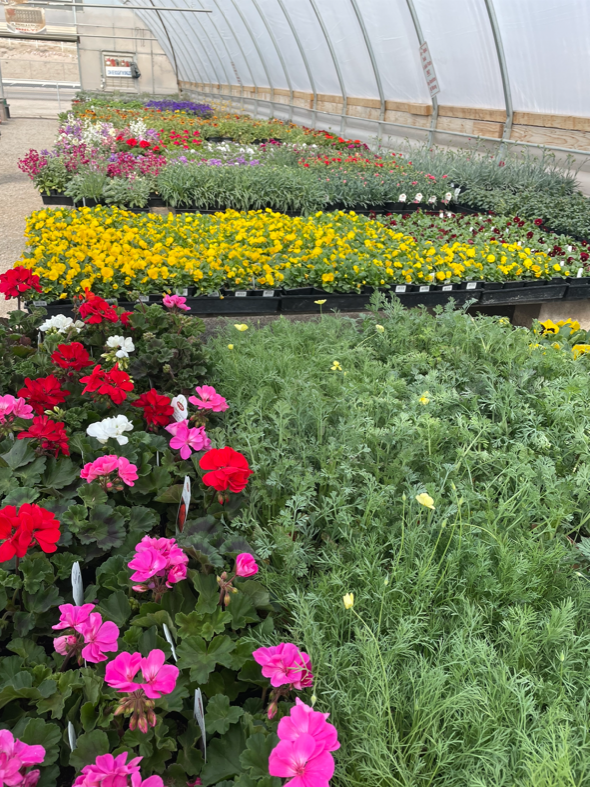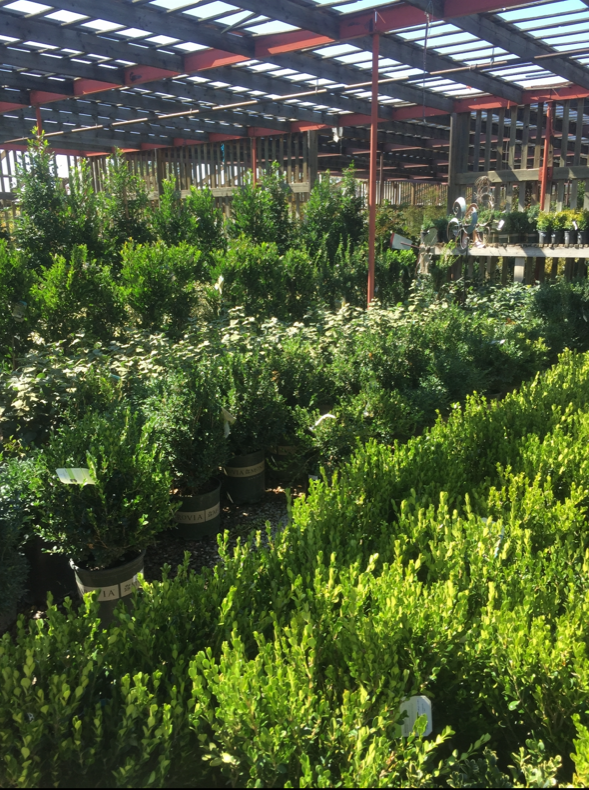
Deciding how many and which plants to overwinter is a critical business decision for Mike Erickson, Vice President of Business Operations at Plant World in Albuquerque, New Mexico.
“All those decisions are based on what type of plant and whether a shortage is expected. Shortages are much more a factor now than in some previous years,” said Erickson, adding that the decision is rarely made due to leftover plants from spring and summer sales season.
In those rare cases, plants are shifted from smaller pots to larger and grown over the winter. In most instances, though, the decision is about buying in the fall to have plants such as succulents like agaves and yuccas that take longer to finish for best appearance.
Plant World is a retailer and wholesaler. For the wholesale side, stocking up for the winter is easier in some ways, because expectations are more clear with advance bids and orders. Still, wholesale projects are ever changing and can be unpredictable.
“Our customers can have landscaping projects that come up in the winter, so material bought in the fall for the spring will go out in November or December instead. The good part is we get it sold, but the bad part is we don’t have that material ready for the spring,” he said.

Timed Right & Acclimated Well
Stocking up in the fall for retail sales in the spring is based more on historical demand. Customer preference is pretty predictable – they want flowering shrubs, he observed.
“You know you need lilacs and forsythia when people see them blooming around town, so it’s best to overwinter them rather than buying them from out of state and potentially miss the right timing when they are pretty and people want to buy,” he explained. “You’ve got to get plants that are coming on at the same time as the plants in local landscapes.”
It’s important to have the key flowering shrubs come up when demand is there, rather than get something in from a West Coast nursery that flowers in the greenhouse in February before customers arrive, he added.
Getting plants from out of state and acclimating them to local conditions over the winter also gives them a better chance of survival when customers install them. This adds value for landscapers who don’t have to pay for space to store and staff to care for the plants over the winter while they acclimate.
“We let our customers know that if they ship here from southern Arizona or California in January or February, they may save a few dollars by buying direct but they often have to warranty their installations for one or two years, and if half the project dies because it’s not acclimated, their savings will disappear. I want them to be aware of how we can help them limit their risk.”

Space Restraints & Plant Care Expenses
Probably one of the biggest constraints to overwintering plans is available space – especially indoors. For Plant World, staffing is not an issue because it has the employees working year round who can care for the overwintering plants.
Though some areas of northern New Mexico would not be as convenient for overwintering due to lower winter temperatures and harsher winter storms, the Albuquerque metro area is in USDA Hardiness Zone 7.
“It’s pretty rare or very short lived that we get into the single digits for any length of time. It’s common to get temperatures that low, but they don’t last,” Erickson said.
He does caution that the extra cost of using heated spaces to store plants should be considered in plant costs; an expense not necessary with plants delivered in the spring. Aging equipment poses a calculated risk, too, since unexpected loss of heat from a broken system can harm or even kill plants. And, if wind comes up and tears plastic greenhouse covers, they must be fixed promptly or the risk of losing plants increases.
“Plant material that is more on the cold hardy side of the spectrum is kept outside. We bring it into the greenhouses in September or October and get it to slow down, and drop leaves. When we feel good about a block being dormant, we move it outside,” he said.
The company carefully plans plant deliveries from other climates all winter long, so that each delivery has time to acclimate in the greenhouse before moving outside. “In March, the greenhouses can really start to warm up, so we have to pay attention to what the material is doing so can move it in and out,” he added.
Risky Weather & Cashflow Challenges

While that works most of the time, Albuquerque experienced a week a few years ago with 40-year low temperatures. The company lost quite a lot of plants that were outdoors that winter. Not only the plants stored outside, but also plants that had been greened up and blossoming for a local trade show in February turned black and died, by the time they were moved outside and loaded for the show.
“In a normal year, those plants would have been fine, but that year changed the curve and we ended up tossing a lot out,” he recalled. “The upside was that plants also died in the landscapes around town so what could have been a terrible year was saved by stronger than usual spring sales.”
Besides that 40-year storm, though, nine times out of 10 the rewards of overwintering outweigh the risks, he estimated.
The biggest challenge with purchasing plants in the fall that won’t be sold until the spring is cashflow. That five to six month delay between paying for inventory and getting paid for it can be difficult, especially for small businesses.
“The decision to overwinter is easier to make if you can work out terms for later payment with growers. Instead of paying in 30 days, if you can pay in 120, for example, that would make more sense,” he suggested. “If there would be a way to get more help from the big growers to carry debt, that would help the wholesalers with overwintering materials and all the related expenses.”
Caring for plants from fall to spring can be hard to justify due to the expenses and the amount of time that a business has to cover negative cashflow, but the investment can pay off nicely when plants are acclimated, readily available to local customers, and at their best when retail customers are ready to buy.
“To me as a business person, it’s that investment decision that I’ll always struggle with. Anybody in horticulture sales looks at the facts and tries to make the best decision they can. It would be nice if the industry came up with ways to make it easier on the independent businesses,” he concluded.










